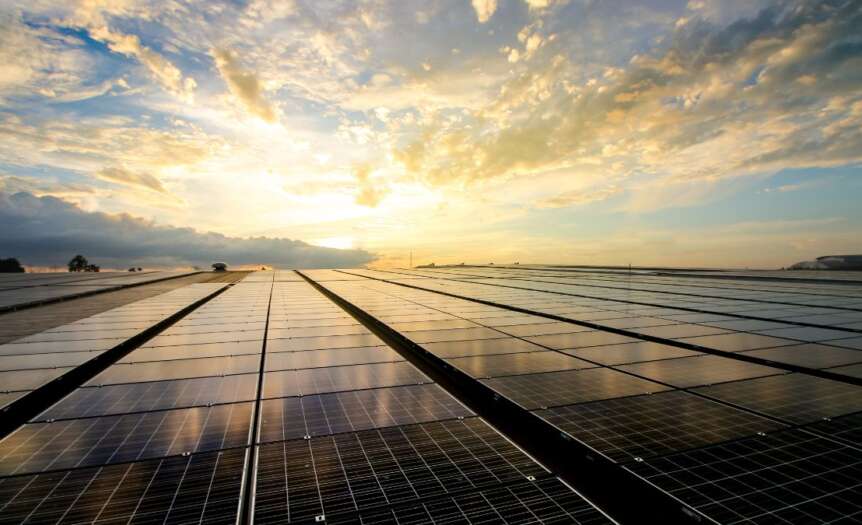More homes throughout America are making the switch to solar power, or combining solar panels with their existing energy systems to create cleaner power. As solar power systems become more popular, it’s easy to get lost in some of the common misconceptions about solar energy. Here are a few of the more popular myths about solar panels and the truth behind each of these ideas.
Hotter Days Means More Power
Some people believe that the hotter summer days provide more energy than the chilly days of winter, but that’s not entirely true. Solar panels absorb light, not heat, so the temperature has little impact on how much power the panels draw from the sun. In fact, many solar panel systems work better on colder days since high temperatures may result in a temporary loss of efficiency in your system.
Solar Panels Don’t Work in Rain and Snow
One of the more common misconceptions about solar energy is the idea that your solar panels can’t absorb any energy when it’s cloudy, rainy, or snowy. While it is true that they won’t receive as much sunlight when there are obstructions, the amount of energy your panels lose shouldn’t create any noticeable loss of power. As long as you keep your solar panels clean and clear of debris, they will receive enough solar power to keep running despite unfavorable weather conditions.
Solar Power Systems Are Too Expensive
As solar panel technology advances and becomes more accessible, it’s easier than ever to start making the transition to a new system. A full solar power system costs roughly $15,000–$35,000. However, there are several purchasing options.
Most companies offer financing plans so homes can make smaller, more manageable monthly payments, and some homes may choose to implement a smaller system at a much more affordable price. The affordability of solar panels adjusts with changes in technology and a need to bring them to a wider audience looking to utilize greener, more sustainable energy.










 Deering Estate
Deering Estate
 Massage Envy South Miami
Massage Envy South Miami
 Calla Blow Dry
Calla Blow Dry
 My Derma Clinic
My Derma Clinic
 Sushi Maki
Sushi Maki
 Sports Grill
Sports Grill
 The Healthy Kitchen
The Healthy Kitchen
 Golden Rule Seafood
Golden Rule Seafood
 Malanga Cuban Café
Malanga Cuban Café

 Kathleen Ballard
Kathleen Ballard
 Panter, Panter & Sampedro
Panter, Panter & Sampedro
 Vintage Liquors
Vintage Liquors
 The Dog from Ipanema
The Dog from Ipanema
 Rubinstein Family Chiropractic
Rubinstein Family Chiropractic
 Your Pet’s Best
Your Pet’s Best
 Indigo Republic
Indigo Republic




 ATR Luxury Homes
ATR Luxury Homes


 2112 Design Studio
2112 Design Studio
 Hamilton Fox & Company
Hamilton Fox & Company
 Creative Design Services
Creative Design Services
 Best Pest Professionals
Best Pest Professionals
 HD Tree Services
HD Tree Services
 Trinity Air Conditioning Company
Trinity Air Conditioning Company
 Cisca Construction & Development
Cisca Construction & Development
 Mosquito Joe
Mosquito Joe
 Cutler Bay Solar Solutions
Cutler Bay Solar Solutions


 Miami Royal Ballet & Dance
Miami Royal Ballet & Dance
 Christopher Columbus
Christopher Columbus
 Pineview Preschools
Pineview Preschools
 Westminster
Westminster
 Carrollton
Carrollton
 Lil’ Jungle
Lil’ Jungle
 Frost Science Museum
Frost Science Museum
 Palmer Trinity School
Palmer Trinity School
 South Florida Music
South Florida Music
 Pinecrest Orthodontics
Pinecrest Orthodontics
 Dr. Bob Pediatric Dentist
Dr. Bob Pediatric Dentist
 d.pediatrics
d.pediatrics
 South Miami Women’s Health
South Miami Women’s Health

 The Spot Barbershop
The Spot Barbershop
 My Derma Clinic
My Derma Clinic




 Miami Dance Project
Miami Dance Project

 Rubinstein Family Chiropractic
Rubinstein Family Chiropractic
 Indigo Republic
Indigo Republic

 Safes Universe
Safes Universe
 Vintage Liquors
Vintage Liquors
 Evenings Delight
Evenings Delight





 Atchana’s Homegrown Thai
Atchana’s Homegrown Thai
 Baptist Health South Florida
Baptist Health South Florida

 Laser Eye Center of Miami
Laser Eye Center of Miami
 Visiting Angels
Visiting Angels
 OpusCare of South Florida
OpusCare of South Florida

 Your Pet’s Best
Your Pet’s Best





 HD Tree Services
HD Tree Services
 Hamilton Fox & Company
Hamilton Fox & Company


 Creative Design Services
Creative Design Services